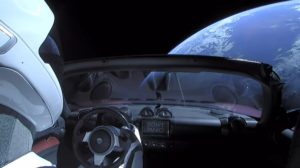In February 2018, Elon Musk’s SpaceX launched the inaugural Falcon Heavy rocket, carrying a unique payload: Musk’s personal Tesla Roadster, complete with a mannequin named “Starman” in the driver’s seat. This event was not only a significant technical achievement but also a strategic move to inspire public interest in space exploration.
Purpose Behind the Launch
The decision to send the Tesla Roadster into space served multiple purposes:
- Demonstration of Falcon Heavy’s Capabilities: The mission showcased the Falcon Heavy’s ability to carry substantial payloads into space, highlighting its potential for future missions.
- Inspiration and Public Engagement: By choosing an unconventional payload, Musk aimed to capture the public’s imagination and reignite interest in space exploration.
- Testing Deep Space Suitability: The mission provided an opportunity to observe how materials withstand the harsh conditions of space over extended periods.
Current Location of the Roadster
As of now, the Tesla Roadster continues its journey through space. It has completed multiple orbits around the Sun and has made a close approach to Mars. The website WhereIsRoadster.com offers real-time tracking of its position, speed, and distance from Earth and other celestial bodies.
Future Trajectory and Longevity
Simulations suggest that the Roadster will remain in space for millions of years, with a small probability of colliding with Earth or Venus over extensive timescales. Over time, exposure to solar and cosmic radiation is expected to degrade the vehicle’s materials, leaving primarily the aluminum frame and inert metals intact.
Elon Musk has hinted at the possibility of a future mission to rendezvous with the Roadster, either to capture images or retrieve it for study, providing insights into material degradation in space.
This mission stands as a testament to human innovation and the spirit of exploration, symbolizing the potential for future endeavors in space travel.


